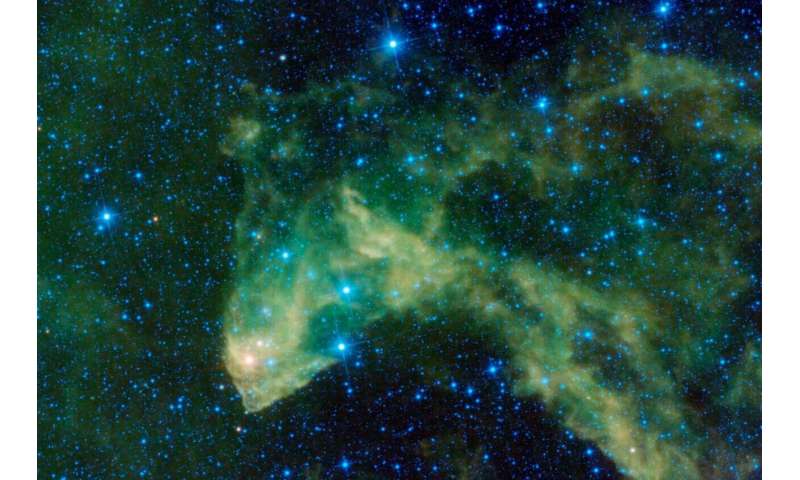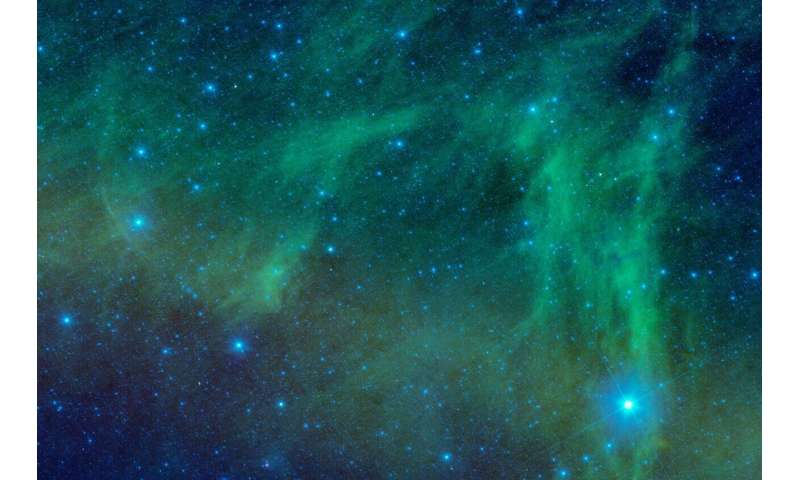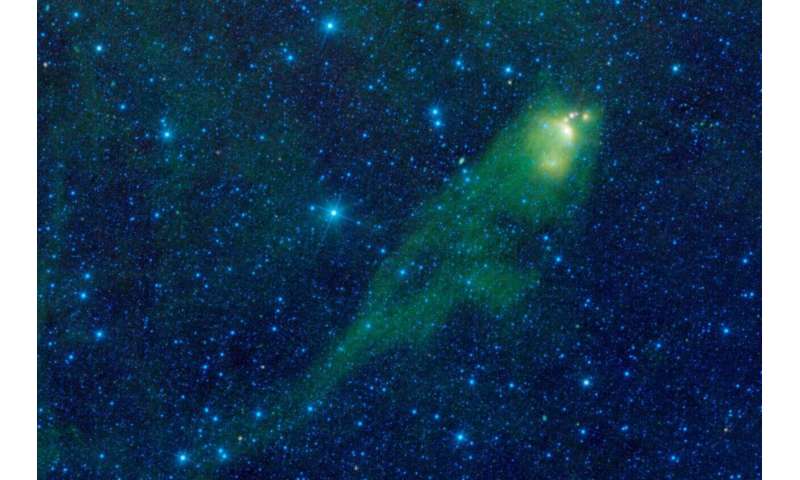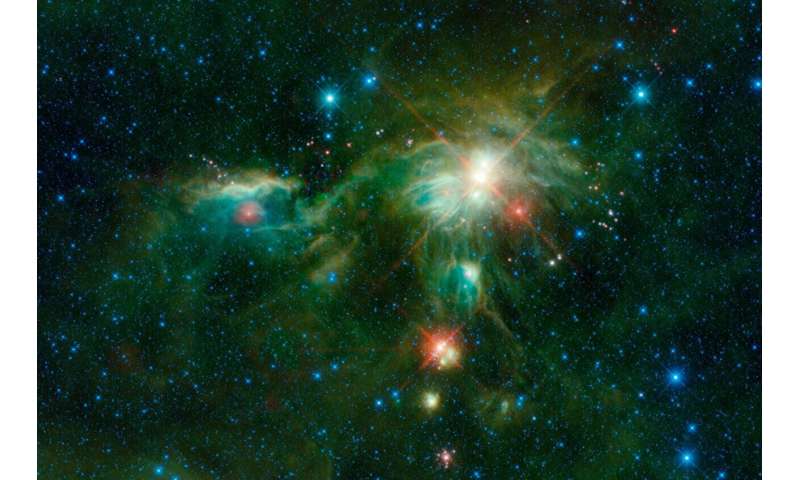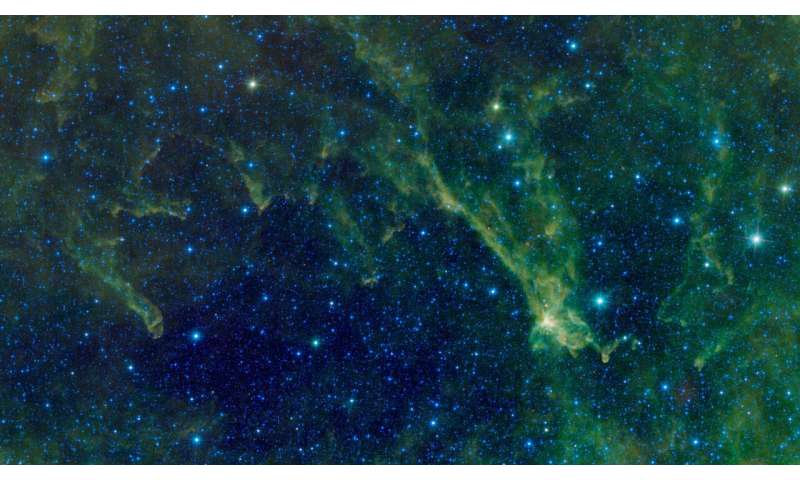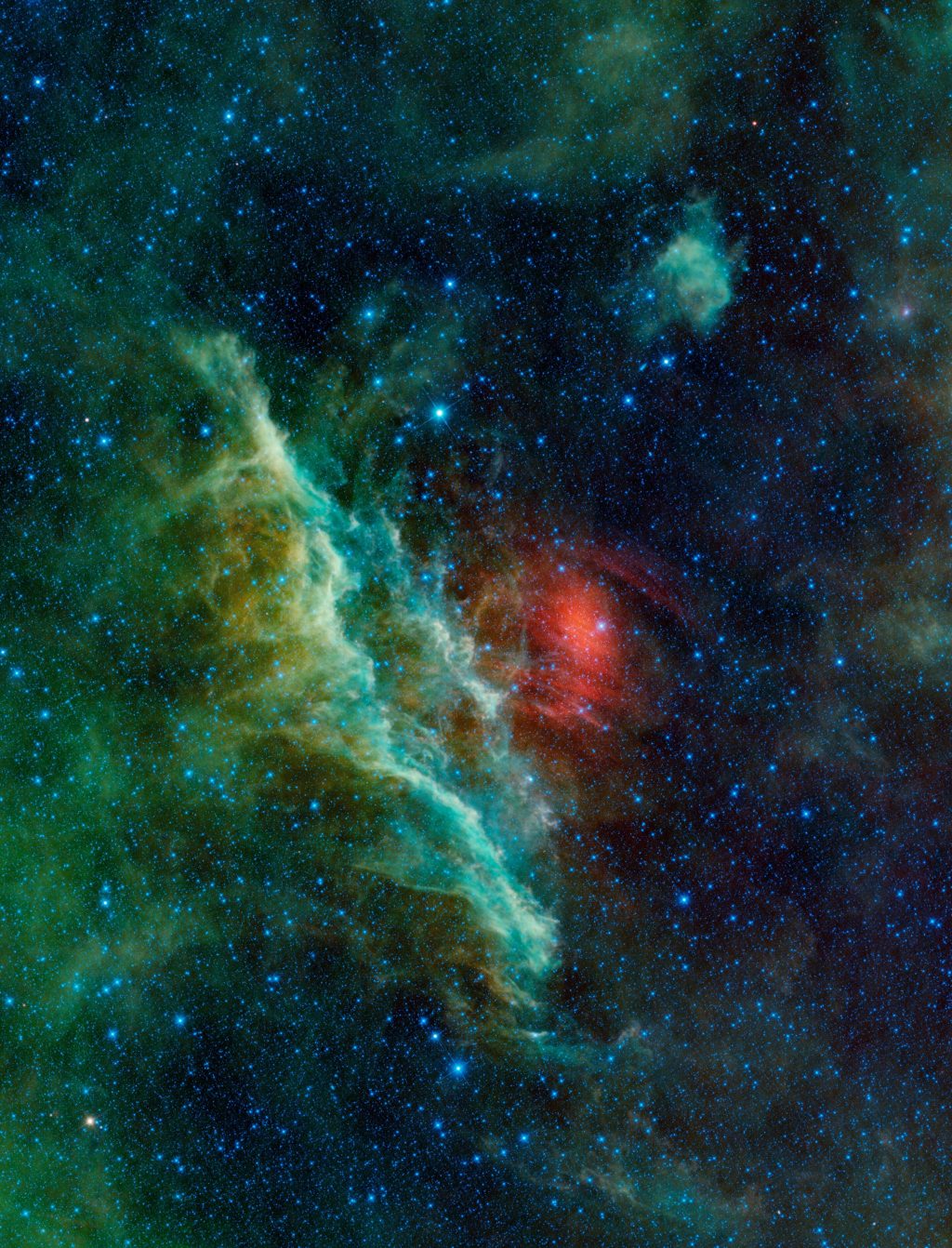
Final data and undiscovered images from NASA’s NEOWISE (Image Credit: Phys.org)
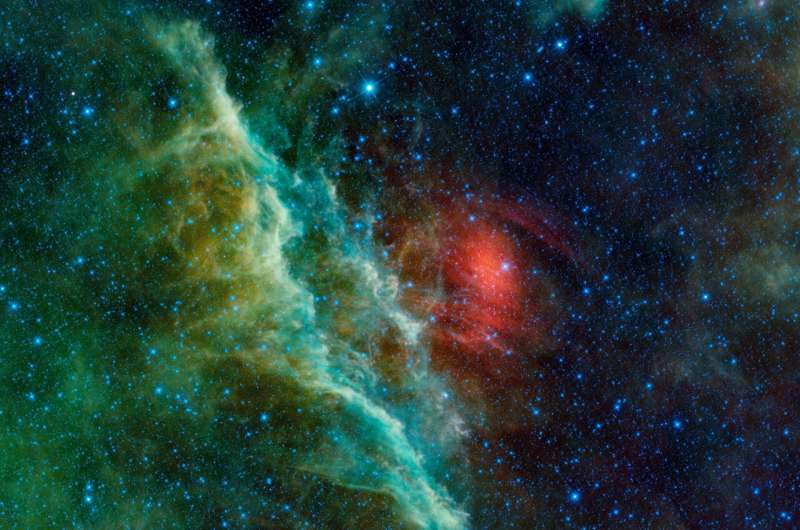
While NASA’s NEOWISE telescope ended its journey through space on Nov. 1, 2024, the team at IPAC, a science center at Caltech, was working on one further gift from the prolific mission.
The final data release from NEOWISE was released to the astronomy community just two weeks later, on Nov. 14, encompassing over 26 million images and nearly 200 billion sources detected by the telescope. And today, IPAC is releasing six new images from the mission’s archival data as a tribute to this landmark project, available here.
NEOWISE was launched as the Wide-field Infrared Survey Explorer (WISE) in 2009 and then reactivated in 2013 as NEOWISE, the asteroid-hunting phase of the mission. The infrared space telescope studied the entire night sky and conducted 21 complete sky surveys during more than a decade of operation.
The mission focused on identifying and studying small objects in our solar system like asteroids and comets, also known as near-Earth objects (NEOs), but the infrared data collected by the telescope has proven to have countless applications throughout the field of astronomy.
The mission concluded operations in July 2024, and during its 15 years in space, scientists have been able to revisit the same areas of the sky again and again, with most being observed by NEOWISE at least 220 times. This repeated observation helps astronomers search for and study objects that change in brightness or location.
“Being able to watch the changing sky for nearly 15 years has opened a new avenue for time-domain science, for everything from the closest asteroids to the most distant quasars,” said Joe Masiero, Research Scientist at IPAC and the Deputy Principal Investigator of the mission.
In recent years, NEOWISE has enabled scientists to study curious objects like brown dwarfs and discover patterns in large populations of comets. Over its mission lifetime, NEOWISE has characterized more than 3,000 NEOs—approximately 10% of the known population, and something that was only possible due to its long tenure scanning the sky.
The final NEO observed by NEOWISE, known as 2007 LV8, was seen more than 100 times in the closing days of the survey since it closely followed the telescope’s scan pattern.
“Because of NEOWISE’s extensive view of the sky, we get a more complete picture of the asteroids and comets in Earth’s orbital neighborhood. The data provide a unique way of understanding factors like the size and rotation period of these NEOs,” said Roc Cutri, NEOWISE Task Lead and Project Scientist at IPAC.
The team at IPAC was responsible for the ingestion and processing of raw data, production of final data products, and archiving mission science and engineering data. IPAC also distributes WISE/NEOWISE data to the community through the NASA/IPAC Infrared Science Archive (IRSA) and provides services such as powerful analysis and visualization tools. The IPAC Communications & Education team prepares mission images for public release in the AstroPix image gallery.
-
Skygazers have dubbed this region the “Gecko Nebula” for its resemblance to a downturned head with a pointed snout, though astronomers refer to the area as LBN 437. This cloud of dust and gas is a region of star formation, which is revealed clearly in infrared light by NASA’s WISE mission. Near the “snout” of the gecko you can see a blazing star with a strong red tint, due to its brightness at longer wavelengths of infrared light. This baby star is in its final stages of formation, and while it gobbles up the last of its fuel, some is ejected away in jets of gas that are carving cavities through the surrounding dust clouds. These structures are known as “Herbig Haro” objects to astronomers, and the most prominent around this young star is called HH 398. This image uses data from the original cryogenic phase of the WISE mission. Infrared wavelengths of 3.4 & 4.6 microns are displayed in blue and cyan, respectively, and are dominated by the glow of stars. Light with a wavelength of 12 microns is displayed in green and traces the presence of carbon-rich dust known as polycyclic aromatic hydrocarbons (PAHs). The 22 micron light is rendered in red and is dominated by the thermal glow of warm dust. Credit: NASA/JPL-Caltech/IPAC
-
At first glance this image might look like the glow of aurorae in the night sky, but it actually reveals patterns of wispy dust that fills the space between stars. This region of sky in the constellation of Aries covers a large swath of sky, about as wide as the span of 11 full moons. When viewed in visible light we see only a myriad of stars, but the infrared view provided by NASA’s WISE reveals a delicate field of cloudy dust structures. This is an example of what astronomers dubbed “infrared cirrus” after its discovery 40 years ago by the Infrared Astronomical Satellite (IRAS). And while its similarity to aurorae may only be coincidental, the patterns seen here are likely also influenced by the effect of magnetic fields in our galaxy. These dust clouds fill the spaces between stars. The faint glow of starlight that permeates interstellar space can excite the glow of carbon-rich dust molecules, known as polycyclic aromatic hydrocarbons (PAHs), which are particularly bright at wavelengths of light around 12 microns, here represented as green. The wispy shapes trace out the flow of interstellar gas and dust. The dim linear band of infrared light running diagonally from the middle left to the lower right side of the field comes from a source much closer to home, within our own solar system. Known as “zodiacal dust,” it fills the flat disk defined by the orbits of the inner planets and asteroids. This material is produced from collisions of asteroids and the passage of comets, objects that were the focus of the NEOWISE mission, the 2013 reactivation of the retired WISE spacecraft. This image uses data from the original cryogenic phase of the WISE mission. Infrared wavelengths of 3.4 & 4.6 microns are displayed in blue and cyan, respectively, and are dominated by the glow of stars. Light with a wavelength of 12 microns is displayed in green and traces the presence of carbon-rich dust known as polycyclic aromatic hydrocarbons (PAHs). The 22 micron light is rendered in red and is dominated by the thermal glow of warm dust. Credit: NASA/JPL-Caltech/IPAC
Never-before-seen images from NEOWISE
During the original WISE mission, more than 100 areas of the sky were highlighted in public image releases, but they revealed only a tiny fraction of the full-sky coverage of the survey.
“The WISE and NEOWISE data releases are built for researchers, but they also embody some of the most amazing images of our infrared sky,” said Robert Hurt, IPAC Visualization Scientist. “They are so easy to work with it’s almost too easy to make a beautiful image from them! That’s why I wanted to revisit the archive to locate some hidden gems we missed before.”
To find new interesting areas of the sky, the positions of the previous images were overlaid onto maps of the sky using data from WISE and other missions. The new map revealed many zones that have not been highlighted for the public but contain fascinating regions of cosmic dust where stars are born. Six spots were selected, with many of them spanning large areas of the sky—a distinct advantage of an all-sky survey such as NEOWISE.
One image stands out as particularly meaningful to the IPAC community: NEOWISE’s view of the California Nebula.
Named after the dust cloud’s resemblance to the California coastline, Masiero says it commemorates the years of hard work and dedication of the NEOWISE data processing team at IPAC, located in Pasadena, California.
“I’m really grateful for all of the people at IPAC who have put so much effort into making this the best dataset possible, for today and for future generations,” said Masiero.
The California Nebula is located in the Milky Way, about 1,000 light-years away, in the Perseus constellation. It is a dusty region illuminated by the nearby massive star Menkib, born just a few million years ago. The entire California Nebula stretches across 100 light-years and is fully captured in this wide-field view in the image above.
The new images pulled from the archives represent the billions of sources detected by NEOWISE waiting to be studied by future researchers.
“We know there are more things to discover in the NEOWISE data that we just haven’t noticed yet,” said Masiero. “As astronomers develop new tools and techniques and as new surveys are conducted, we can be sure the NEOWISE archive will be one of the first places we look for the data needed to better understand our universe.”
-
This tadpole-shaped nebula is known as CG12. It is an example of a “cometary globule,” where a denser region of dust trails off into thread-like strands. While challenging to see in visible light images, WISE easily shows the full extent of the globule’s tail as it lights up at longer wavelengths of infrared light. The tip of CG12 is also known as NGC 5367 in the Centaurus constellation. This region is easier to see as a “reflection nebula” as the light of the bright stars scatters off of the enveloping dust clouds, showing up in visible light images as a blue haze. This image uses data from the original cryogenic phase of the WISE mission. Infrared wavelengths of 3.4 & 4.6 microns are displayed in blue and cyan, respectively, and are dominated by the glow of stars. Light with a wavelength of 12 microns is displayed in green and traces the presence of carbon-rich dust known as polycyclic aromatic hydrocarbons (PAHs). The 22 micron light is rendered in red and is dominated by the thermal glow of warm dust. Credit: NASA/JPL-Caltech/IPAC
-
This infrared WISE image displays the Monoceros R2 molecular cloud, where stars are born. Most noticeable are the large glowing regions of dust, lit up and shaped by the brilliant glow of newborn stars in the area. But look more closely and you will see dozens of red-hued stars dotting the periphery of the vivid nebulae; these are much younger stars still in the process of forming, and they only peek through the dust clouds at longer wavelengths of infrared light. The very brightest region seen here is also known in visible light as NGC 2170, but in those shorter wavelengths of light, most of the stellar nursery is hidden behind dust clouds. Dust becomes increasingly transparent at longer wavelengths of infrared light, which is why astronomers turn to datasets like those from the WISE mission to peer more deeply into shrouded regions like this that harbor the earliest stages of star formation. This image uses data from the original cryogenic phase of the WISE mission. Infrared wavelengths of 3.4 & 4.6 microns are displayed in blue and cyan, respectively, and are dominated by the glow of stars. Light with a wavelength of 12 microns is displayed in green and traces the presence of carbon-rich dust known as polycyclic aromatic hydrocarbons (PAHs). The 22 micron light is rendered in red and is dominated by the thermal glow of warm dust. Credit: NASA/JPL-Caltech/IPAC
-
These ghostly pillars span a large swath of sky about half the width of your outstretched hand held at arm’s length, falling along the boundary between the constellations of Vela and Centaurus. However, they have no common name and are not identified in historic catalogs like Messier or NGC for the simple reason they cannot be seen in visible light. This region falls behind a veil of dust in the spaces between stars and can only be seen at longer wavelengths of infrared light, as seen here in data from NASA’s WISE mission. At wavelengths of 12 and 22 microns, displayed here in green and red, respectively, the obscuring dust becomes more transparent, and denser clouds of dust begin to glow clearly under the light of neighboring stars. Pillars such as these are found in regions where there are clumpy, denser clouds of gas and dust falling under the illumination of nearby hot, bright stars. The dust particles are slowly destroyed by the stars’ ultraviolet light, but denser regions erode more slowly than their surroundings, and even shield material behind them. This creates striking pillar-shaped structures like these. The tips of these pillars often serve as stellar nurseries, as the denser gas and dust collapse over time to form and nurture new stars. These can be seen as red-tinted spots of light in the two largest pillars in this image, glowing brightly at the longest wavelengths of infrared light. This image uses data from the original cryogenic phase of the WISE mission. Infrared wavelengths of 3.4 & 4.6 microns are displayed in blue and cyan, respectively, and are dominated by the glow of stars. Light with a wavelength of 12 microns is displayed in green and traces the presence of carbon-rich dust known as polycyclic aromatic hydrocarbons (PAHs). The 22 micron light is rendered in red and is dominated by the thermal glow of warm dust. Credit: NASA/JPL-Caltech/IPAC
Discover the latest in science, tech, and space with over 100,000 subscribers who rely on Phys.org for daily insights.
Sign up for our free newsletter and get updates on breakthroughs,
innovations, and research that matter—daily or weekly.
NEOWISE’s legacy is only just beginning
As astronomers continue to mine the NEOWISE archive at IRSA, there are many untold stories of comets, asteroids, nebulae, and more waiting in the data.
Yuna Kwon, a solar system astronomer and IPAC archive scientist, first joined as a postdoctoral fellow in 2023. Even though the NEOWISE mission ended not long after, her work with its data is only just beginning.
Along with Masiero, Kwon is leading a project called COSINE, Cometary Object Study Investigating their Nature and Evolution, cataloging and analyzing comets observed by NEOWISE.
“Together with my amazing colleagues at IPAC, we now have the largest-ever consistently analyzed comet database and are preparing publications based on our findings,” said Kwon.
Kwon studies comets because they are some of the oldest and most primitive objects in our solar system. Their physical properties could tell us about the conditions during the solar system’s formation.
“Comets are like cats—they have tails and do precisely what they want,” said Kwon. “Thankfully, NEOWISE has a treasure trove of data to study these idiosyncratic objects.”
Before working with NEOWISE data, Kwon said that it was hard to decipher large-scale trends from only a small number of comets. But now with COSINE and NEOWISE data, she is able to understand the big picture.
“I’m truly enjoying this exploration,” said Kwon. “My experience with NEOWISE data has broadened my perspective and deepened my understanding of the comet population itself, putting the observations in a broader context of the formation and evolution of the solar system.”
Going forward, Kwon hopes to combine the knowledge gained from NEOWISE with new data from upcoming observatories including NEO Surveyor and SPHEREx.
Provided by
Caltech IPAC
Final data and undiscovered images from NASA’s NEOWISE (2024, November 26)
retrieved 26 November 2024
from https://phys.org/news/2024-11-undiscovered-images-nasa-neowise.html
part may be reproduced without the written permission. The content is provided for information purposes only.


